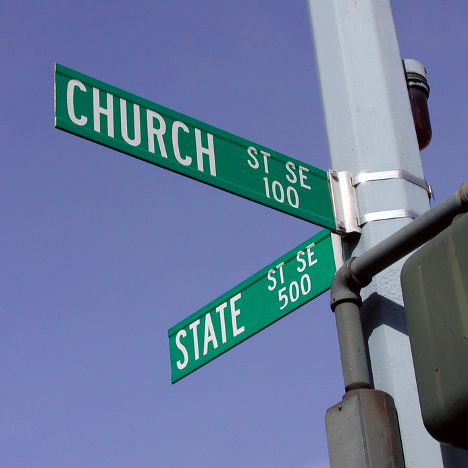The Supreme Court is all over the headlines these days. Last Friday was the end of its 2021 term, when the few remaining unpublished opinions of the year’s term were announced. This was unlike any other. The new 6-3 conservative majority, untethered and free-ranging, gave us a whole new playbook.
But… it’s not entirely new. Antonin Scalia, the deceased Justice, replaced by Justice Gorsuch, started the train down this track when he described his jurisprudential approach as originalism. The term had been in use since the 1980s but Scalia was the first Supreme Court Justice to embrace it. An originalist, he believed, should base each constitutional decision “on what reasonable persons living at the time of the Constitution’s adoption would have understood the ordinary meaning of the text to be.” It was a radical approach when presented and regarded as unconventional by most constitutional law scholars.
Because of its relevance, it’s worth reviewing originalism. If it’s the judicial flavor of the day, as it is for the six conservative justices, it should be noted that four of the current court’s justices – Clarence Thomas, Amy Coney Barret, Elena Kagan, and Sonia Sotomayor – would not have originally been allowed to serve. All would have been disqualified and denied the opportunity and the vote, because none are white, male landowners – the only citizens allowed to vote when the Constitution was adopted in 1787. And, for that matter, Justice Thomas’ vote would only be worth 3/5 of the others because blacks were counted as that fraction when the Constitution was ratified. Article I, Section 2, Clause 3 of the US Constitution.
We know that argument is specious, but no less so than those being espoused by the new majority. Let’s get real. This is not 1787, even though Justice Alito cited a 17th century jurist, more than a dozen times in his opinion overturning Roe v. Wade and called him “a great common law authority.” ProPublica, on the other hand, reported that he is better known as the jurist who “conceived the notion that husbands can’t be prosecuted for raping their wives, who sentenced women to death as ‘witches,’ and whose misogyny stood out even in his time.”
Here, at the end of the 2021 term, we can see the new Supremes in action, and it’s probably worse than you think. Six opinions in less than ten days. Funding religious schools (Maine). Permitting the open carry of guns without restriction (New York). Denying women the right to an abortion (Mississippi). Allowing a coach to kneel in prayer at midfield following a high school football game (Washington). And overruling Environmental Protection Agency rules on carbon emissions. This is Back to the Future, A Handmaid’s Tale, and 1984 all rolled into one. A colossal setback for American legal landscape?
There is no question about the direction of the new court. Its conservative majority has thrown away the traditional playbook and introduced a new one. Overturning Roe v. Wade was foreshadowed by a leaked draft opinion that grabbed most of the headlines two months ago, but it’s only one of four important cases and is likely less significant than the others. Conservatives have a long history of criticizing “activist” judges, but the current court has usurped that label by creating new law with each of its recent decisions.
The new majority is viewing Constitutional questions outside the traditional judicial review framework and in one case (Washington) by misstating its facts in order to reach the decision it favored. (See https://www.seattletimes.com/seattle-news/politics/the-myth-at-the-heart-of-the-praying-bremerton-coach-case/?utm_source=referral&utm_medium=mobile-app&utm_campaign=ios
Separation of church and state was ignored in two of the cases, and vigilante justice upheld in the other. New rights were created in three, while one, relied on by women for 50 years, was taken away using that specious originalist approach.
How can they even think about going back to mid-century America? In 1950 misogyny, racism, segregation, and antisemitism were common. Schools were segregated. It was unlawful for men and women of different races or same-sex couples to marry. Contraception was unavailable to unmarried couples. Sodomy was criminal. Neighborhoods were red-lined to prevent people of color from buying in. Until the 1960s a woman could not open a bank account in her own name and it was 1974 before she could get a credit card without her husband’s permission.
I’ve always believed it’s good to shake things up as a way to introduce new ideas, but these are not new ideas. These are throwbacks to an earlier time. Is the court trying to recreate an earlier America? We should not be bound by 18th century notions of justice. Most legal scholars believe the Constitution is a “living” document and should be interpreted to reflect changes in and appropriate to the times.
_____
Justice Thomas, the longest serving and most radical of the new majority, was confirmed in 1991 and voted with Scalia for 25 years. For most of those years he sat silently on the bench. In one ten year stretch he didn’t ask a single question during oral argument. It wasn’t until after Scalia’s death that he started to talk. Some court watchers think it was because he feared Scalia’s criticism?
A journalist once asked Scalia to compare his judicial philosophy to Thomas’ and his response was, “Look, I’m an originalist but I’m not a nut.” Commentators have characterized that by saying, while an originalist, Scalia felt bound by stare decisis (prior precedent). He was not untethered and free ranging. Thomas is, and recent decisions have documented his take-no-prisoners approach. Precedent be damned. All decisions are political, and it seems clear the new majority will do whatever mental jiujitsu is necessary to get where they want to go.
I’ll get to Roe v. Wade, but in the recent set of six decisions, the First Amendment’s Establishment Clause, “Congress shall make no law respecting an establishment of religion, or prohibiting the free exercise thereof…” was the first to fall.
Both the school funding (Maine) and coach prayer (Washington) cases were decided in favor of Christian petitioners. Would the outcomes be the same if the school had been a Jewish yeshiva or the coach had taken a prayer rug to midfield and faced Mecca? Not likely. Perhaps more significant than the result is knowing that Gorsuch’s opinion in the prayer case misstated the facts underlying the appeal. He characterized the coach’s behavior as a “short, private, personal prayer,” when in fact the coach said in 2015 that he was inspired to start holding midfield prayers after he saw an evangelical Christian movie called “Facing the Giants” and was moved to hold his “postgame ritual at midfield after each game…to help these kids be better people.”
Gorsuch stated that “He offered his prayers quietly while his students were otherwise occupied,” but one student recalled, “To this day, I don’t remember who we played or if we even won. … All I remember is the aftermath of that game and over 500 people storm[ing] the football field … from both sides, hopping the fences and rushing to the field to be close to Kennedy before he started his prayer.”
_____
Originalist outcomes are impossible to predict. For 240 years Supreme Court justices weighed the interests of petitioners, looked at written statutes, established and Common Law to interpret the issues before them. They established guidelines to test and judge the constitutionality of these cases. Over time, some standards changed but so did the court’s view of the Constitution and how to apply its strictures.
The new majority, using the rubric of originalism, now claims the only rights protected by the Constitution are those specifically enumerated. Roe was overturned on that basis. According to Alito, Roe was “egregiously wrong from the start,” because there is no mention of abortion in the Constitution and no compelling federal interest to recognize. On the other hand, the public-school coach’s right to prayer was upheld even though the First Amendment states unequivocally “Congress shall make no law respecting the establishment of religion.”
In the Trump Muslim ban case, Justice Sotomayor wrote, “When the government acts with the ostensible and predominant purpose [of disfavoring a particular religion],” it violates that central Establishment Clause value of official religious neutrality, there being no neutrality when the government’s ostensible object is to take sides.” Neutrality is the key in determining whether an action violates the Establishment Clause.
_____
Of the four opinions delivered last week, the one most likely to tear us further apart is the reversal of Roe v. Wade. As Linda Greenhouse, the New York Times Supreme Court reporter says, “The did it because they could.” They’ve been laying the groundwork for 50 years and Donald Trump finally gave them the numbers. Much as I admired her, I partially blame Justice Ginsburg for this situation. She was tough as nails but terminally ill. Had she resigned and allowed President Obama appoint her successor the court would have maintained its fragile 5-4 balance.
In 1973 the court anchored its Roe v. Wade decision on the appellant’s “right to privacy,” the right to be secure from government interference in your personal life. Scholars have argued that it might have been better to have based it on the 14th Amendment’s due process and equal protection provisions, as it had in so many other civil rights cases. Either rationale was destined to fail in light of the current court’s determination to cancel a woman’s right to control her own reproductive life. It was part of a long-standing plan—50 years in the making. Neither right to privacy nor equal protection could have saved it.
Overturning Roe had nothing to do with jurisprudence. It was purely political—maybe even religious. The court’s majority in the Mississippi (Dobbs) case, cast it as a matter best left to the states, but within days it overturned a gun law enacted by New York State because the matter was too important to let the state to decide.
Isn’t that circular? In the abortion case, the government gets to control a woman’s reproductive choices, but can’t protect its citizens by restricting the open carry of a gun in public. Apparently, citizen safety is less important than limiting the Second Amendment rights of free-ranging gun owners.
The message is clear, guns are more important than women. It’s lawful to open-carry but unlawful for a woman to control what’s in her womb. There is a certain consistency…both decisions will result in more innocent deaths. Better to let a woman die than give her the vote, because denying her the right to choose is the same as canceling her vote. The 19th Amendment doesn’t mean much when your body is unrepresented.
Ironically, following Roe’s reversal last week, the governors of Mississippi and South Dakota were quick to show their compassion for women by claiming they plan to increase funding and enhanced services for young women–specifically education on the virtues of abstinence, adoption, and foster care. It should be noted that Mississippi is ranked #1 and South Dakota #2 as “maternity care deserts,” states in which maternity health care services are limited or absent, either through lack of services or barriers to a woman’s ability to access that care. (www.marchofdimes.org)
OK, ladies, just cross your legs… everything will be fine. And if not, we can place your newborn in our overloaded foster-care system. At last count, the US had 117,000 children awaiting adoption and 400,000 in foster care. www.datacenter.kidscount.org). That’s right, half a million children were without parents during the Roe v. Wade period, when abortion was a constitutionally guaranteed right. How many more will there be now that abortion is unavailable?
I’m no oracle, but we are in uncharted waters with the new Supreme Court. The new majority is disregarding the old ways of the court and undermining the civility and authority of the Chief Justice. It has articulated a new approach – stating in the gun rights case that the prior “means-end” test is giving way to an approach “consistent with this Nation’s historical tradition.” What that portends remains to be seen.
On Friday, Justice Breyer retired and Ketanji Brown Jackson was sworn in as his replacement. She will join Justices Sotomayor and Kagan on the liberal side. It won’t likely change outcomes, but it will change the look and to some extent the interactions of The Nine. I’ll be watching.
































Wow….great summary!
Right on. Ezra Klein had an excellent podcast this past week making the same points and carrying the theme back to 2000 Bush v Gore. He was interviewing Kate Shaw a former clerk for John Paul Stevens. They reviewed about a dozen recent decisions prior to this year.
As Paul Waldmann wrote today: we need to declare our independence from our founding fathers. Actually I think our FF’s would agree.
Jack,
Great article. Another reason that 7 of the present justices would not have served on the original Supreme Court is they are Catholic ( Gorsuch now Episcopalian). How times have changed in many ways. Mike
Damn. Thank you for writing this.